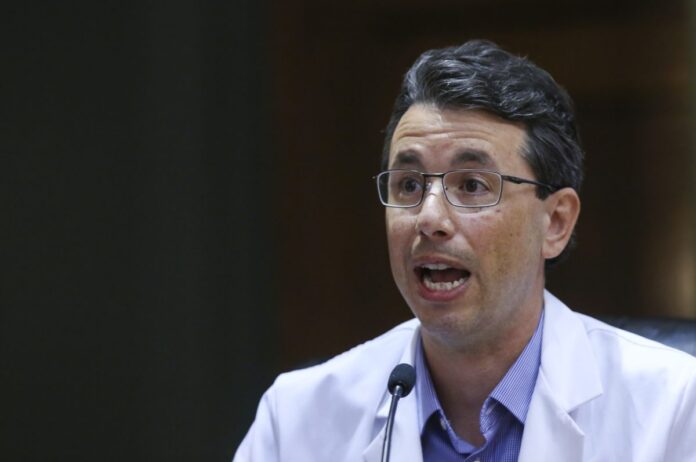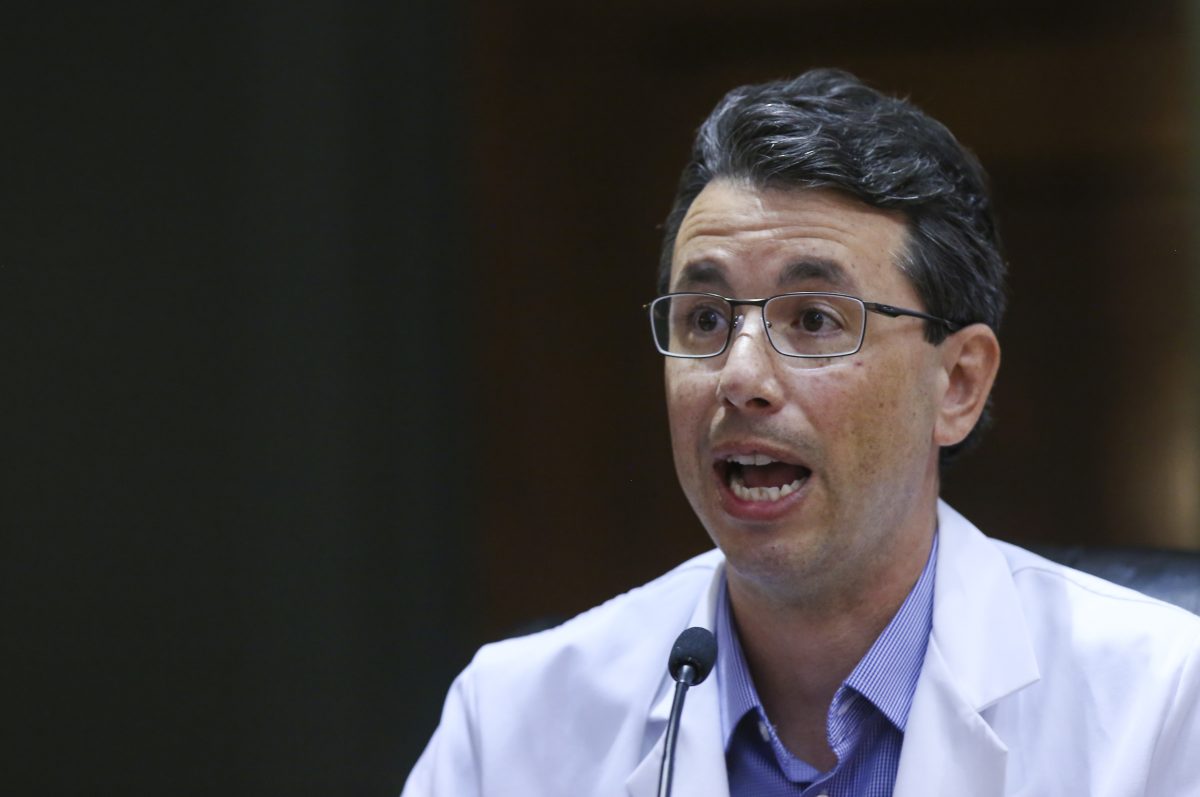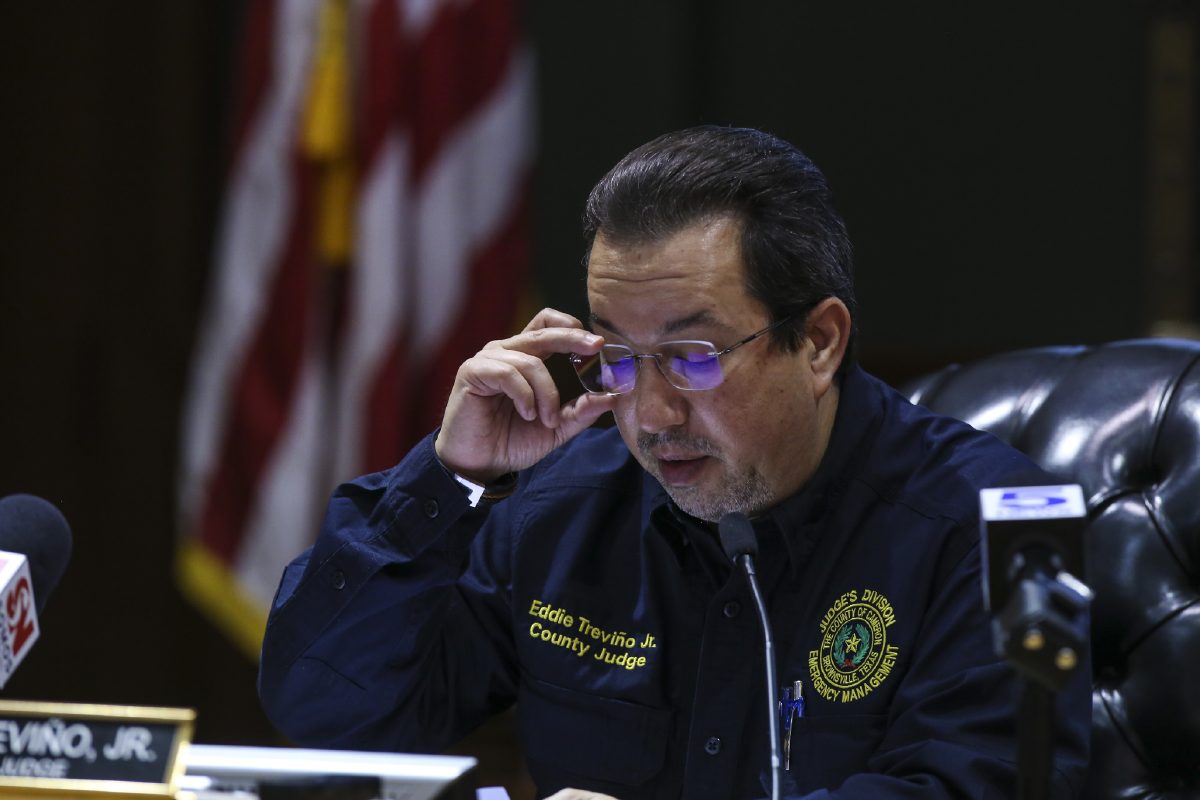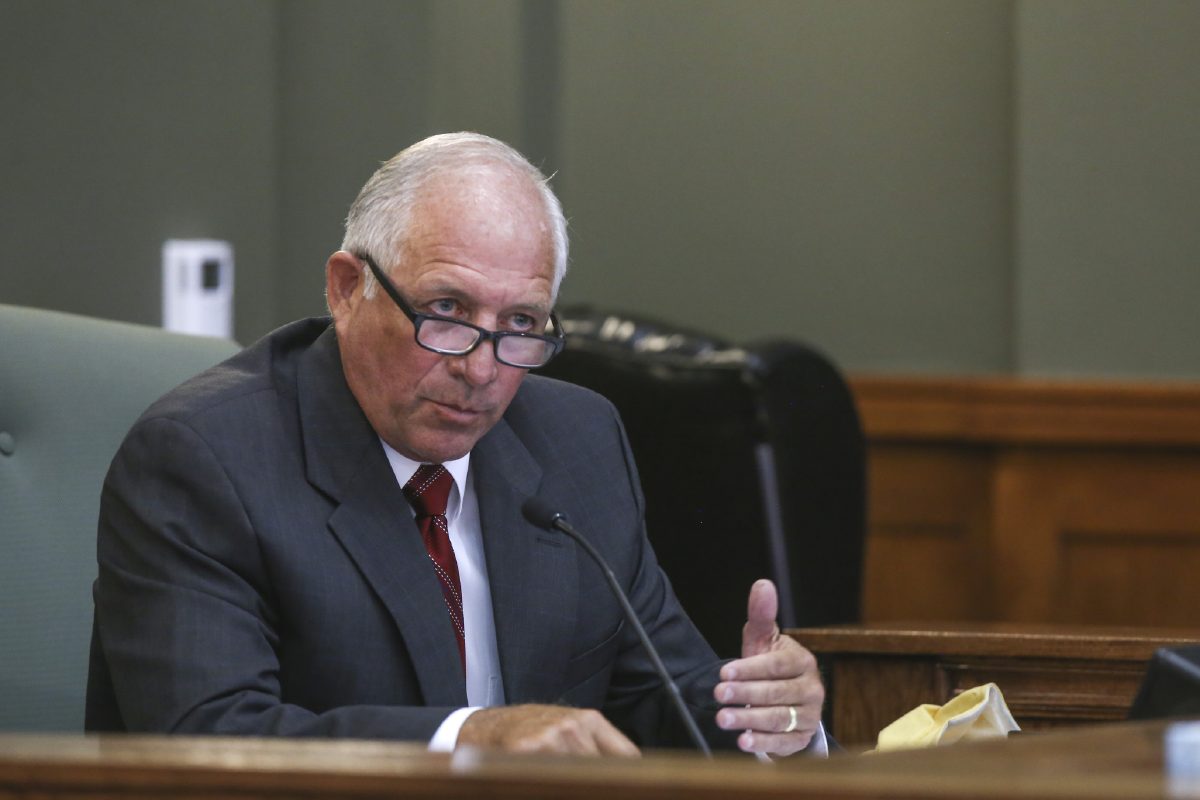
Cameron County is on course to run out of hospital bed capacity for COVID-19 patients if everyone doesn’t start doing their part now to prevent the virus from spreading even further out of control.
That was the message from Cameron County Public Health Authority Dr. James Castillo at a Monday press conference hosted by county Judge Eddie Treviño Jr. What everyone hoped wouldn’t happen — virus cases spreading like wildfire once major reopening got underway with Memorial Day — has happened, Castillo said. So it’s time for everyone to go back to doing what kept the virus in check in the early days: wear a mask or other facial covering in public, practice social distancing, wash hands frequently, regularly disinfect frequently touched surfaces, he said.
Especially, wear a mask. Scientists have figured out that the virus spread mostly through the tiny droplets of saliva people exude when talking but especially when coughing and/or sneezing, Castillo said. And while wearing a mask isn’t a guarantee that you won’t catch the virus, it is extremely effective and substantially lowers the risk because it keeps those droplets from circulating, he said.
Meanwhile, as the line on the graph showing new county cases steepens, what residents are seeing now isn’t a second wave, Castillo said, but really the first wave just getting started, while the reports of 10 or 20 new cases a day before Memorial Day was a mere preview. On June 20 the county reported another 92 new cases, bringing the total to 1,546 with 944 recoveries and 48 deaths.
“We didn’t have a first wave yet,” he said. “The wave is coming now. That was a warning.”
Castillo said the volume of testing has increased, though the picture it’s painting is grim.
“Across the state of Texas tests are coming back about 6 percent positive,” he said. “In Cameron County they’re coming back 30 percent positive, 40 percent positive, 50 percent positive. That’s not good. … What’s really growing is the community (spread) cases, and most of them are in people under 40. We were hoping not to see this. Not every state has seen it. Not every county has seen it. But we’re seeing it.”
Castillo said the rate of new positive tests in the county is turning into an “exponential curve.”
“All these curves start off very gentle,” he said. “And once they get going it’s like a freight train. You can’t stop it on a dime. You have to do something early to try to get it to slow down.”
Castillo predicted that residents who have decided the pandemic is over and let down their guard in terms of mask wearing, social distancing and sheltering in place will resort back to those best practices as the situation worsens and the number of new cases continues to double.
“As people start seeing this, people are going to get scared,” he said. “And people are going to following those recommendations more closely and I hope it slows down. I’m hoping it doesn’t continue on an exponential curve. That’s what will happen if we don’t do anything, but I know people are going to do things. I know our community is going to something about this, because we can.”
Manny Vela, president and CEO of Valley Baptist Health System, speaking at Monday’s press conference, said the county did a good job of “bending the curve” in the early days when county and city mandates were in place, before Gov. Greg Abbott’s order rescinded those mandates starting May 1.
“When best practices were implemented it was very good at stemming spread over three months,” Vela said. “Then when guidelines were loosened we went backwards. … But we’re trying to get back to where we need to be.”
Noting the increase in hospitalizations for COVID-19, with most new cases coming from southern Cameron County, he said, “the data does not lie.”
Castillo said that while some argue that the rapid growth in new cases is only the result of expanded testing, he pointed to the number of hospitalizations, which he characterized as “climbing and climbing and climbing.”
“You don’t get put in the hospital just because you test positive,” he said. “A small percent of people are going to wind up the hospital, but still it’s happening.”
While people with diabetes, obesity and heart problems are most at risk from becoming seriously ill or dying from COVID-19, it also targets younger people, Castillo said, adding that there are people in the hospital in the county who are in their 20s and 30s and “very sick” with the virus.
“This is not a virus you want,” he said. “You have no idea what it’s going to do.”







